
The Third Man factor or Third Man syndrome refers to the reported situations where an unseen presence, such as a spirit, provides comfort or support during traumatic experiences.

The Third Man factor or Third Man syndrome refers to the reported situations where an unseen presence, such as a spirit, provides comfort or support during traumatic experiences.
Sir Ernest Shackleton, in his 1919 book South , described his belief that an incorporeal joined him and his men during the final leg of their Antarctic journey. Shackleton wrote, "during that long and racking march of thirty-six hours over the unnamed mountains and glaciers of South Georgia, it seemed to me often that we were four, not three". [1] His admission resulted in other survivors of extreme hardship coming forward and sharing similar experiences.
In recent years well-known adventurers like climber Reinhold Messner and polar explorers Peter Hillary and Ann Bancroft have reported the experience. One study of cases involving adventurers reported that the largest group involved climbers, with solo sailors and shipwreck survivors being the second most common group, followed by polar explorers. [2] Some journalists have related this to the concept of a guardian angel or imaginary friend. Scientific explanations consider this a coping mechanism or an example of bicameral mentality. [3] The concept was popularized by a 2009 book by John G. Geiger, The Third Man Factor, that documents scores of examples.
Modern psychologists have used the "third man factor" to treat victims of trauma. The "cultivated inner character" lends imagined support and comfort. [4]
This section appears to contain trivial, minor, or unrelated references to popular culture .(November 2018) |
Who is the third who walks always beside you?
When I count, there are only you and I together
But when I look ahead up the white road
There is always another one walking beside you
Gliding wrapt in a brown mantle, hooded
I do not know whether a man or a woman
— But who is that on the other side of you?
Lines 359 through 365 of T. S. Eliot's 1922 modernist poem The Waste Land were inspired by Shackleton's experience, as stated by the author in the notes included with the work. It is the reference to "the third" in this poem that has given this phenomenon its name (when it could occur to even a single person in danger).
In Geraldine McCaughrean's 2005 young adult fiction novel The White Darkness , the teenage heroine, Sym, joins a doomed Antarctic expedition. Abandoned and lost, she is guided to safety by a "third man", her imaginary friend, Captain Lawrence Oates.
In Larry McMurtry's 1985 Western novel Lonesome Dove , Pea Eye, after surviving an Indian attack with Gus, makes a trek back to Call and has an experience of a "ghost" or "spirit" that guides him during his walk.
Thomas Pynchon's 2006 novel Against the Day makes reference to the experience.
In Max Brooks's 2006 novel World War Z , Colonel Christina Eliopolis crash lands in the midst of zombie-infested territory but is able to survive and be picked up with the assistance of a Sky Watcher codenamed "Mets Fan", who is later revealed to be a figment of her imagination. She maintains the belief that Mets is a real person.
In the 2006 film The Guardian, a drowning sailor, being rescued by Ashton Kutcher's character Jake, asks, "Where is he?" and then tells of a man who had stayed with him and held him up until help arrived.
In the 2013 film Gravity , biomedical engineer Ryan Stone watches astronaut Matt Kowalski float away into space to certain death. Later in the film, as an exhausted Stone is about to give up, we see Kowalski appear and enter her space capsule, supposedly having survived. He gives Stone the strength of will to continue, and shows her a means to return to Earth, before being revealed as a figment of her imagination.
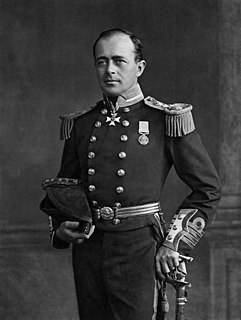
Captain Robert Falcon Scott,, was a Royal Navy officer and explorer who led two expeditions to the Antarctic regions: the Discovery expedition of 1901–1904 and the ill-fated Terra Nova expedition of 1910–1913. On the first expedition, he set a new southern record by marching to latitude 82°S and discovered the Antarctic Plateau, on which the South Pole is located. On the second venture, Scott led a party of five which reached the South Pole on 17 January 1912, less than five weeks after Amundsen's South Pole expedition.

Sir Ernest Henry Shackleton was an Anglo-Irish Antarctic explorer who led three British expeditions to the Antarctic. He was one of the principal figures of the period known as the Heroic Age of Antarctic Exploration.
The Seven Summits are the highest mountains of each of the seven traditional continents. Climbing to the summit of all of them is regarded as a mountaineering challenge, first achieved on 30 April 1985 by Richard Bass. Climbing the Seven Summits and additionally reaching the North and South poles has been dubbed the Explorers Grand Slam.
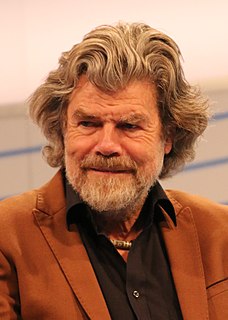
Reinhold Andreas Messner is an Italian mountaineer, explorer, and author from South Tyrol. He made the first solo ascent of Mount Everest and, along with Peter Habeler, the first ascent of Everest without supplemental oxygen. He was the first climber to ascend all fourteen peaks over 8,000 metres (26,000 ft) above sea level. Messner was the first to cross Antarctica and Greenland with neither snowmobiles nor dog sleds. He also crossed the Gobi Desert alone.
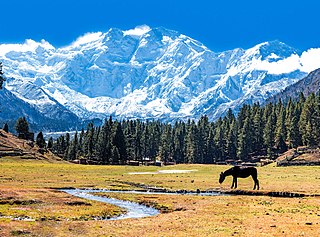
Nanga Parbat, known locally as Diamer, is the ninth-highest mountain on Earth, its summit at 8,126 m (26,660 ft) above sea level. Lying immediately southeast of the northernmost bend of the Indus river in the Gilgit-Baltistan region of Pakistan-administered Kashmir, Nanga Parbat is the westernmost major peak of the Himalayas, and thus in the traditional view of the Himalayas as bounded by the Indus and Yarlung Tsangpo/Brahmaputra rivers, it is the western anchor of the entire mountain range.

The voyage of the James Caird was a journey of 1,300 kilometres (800 mi) from Elephant Island in the South Shetland Islands through the Southern Ocean to South Georgia, undertaken by Sir Ernest Shackleton and five companions to obtain rescue for the main body of the stranded Imperial Trans-Antarctic Expedition of 1914–1917. Polar historians regard the voyage of the crew in a 22.5-foot (6.9 m) ship's boat through the "Furious Fifties" as one of the greatest small-boat journeys ever completed.

Thomas Crean was an Irish seaman and Antarctic explorer who was awarded the Albert Medal for Lifesaving (AM).

The Imperial Trans-Antarctic expedition of 1914–1917 is considered to be the last major expedition of the Heroic Age of Antarctic Exploration. Conceived by Sir Ernest Shackleton, the expedition was an attempt to make the first land crossing of the Antarctic continent. After Roald Amundsen's South Pole expedition in 1911, this crossing remained, in Shackleton's words, the "one great main object of Antarctic journeyings". Shackleton's expedition failed to accomplish this objective, but became recognized instead as an epic feat of endurance.

Endurance was the three-masted barquentine in which Sir Ernest Shackleton and a crew of 27 men sailed for the Antarctic on the 1914–1917 Imperial Trans-Antarctic Expedition. The ship, originally named Polaris, was built at Framnæs shipyard and launched in 1912 from Sandefjord in Norway. After her commissioners could no longer pay the shipyard, the ship was bought by Shackleton in January 1914 for the expedition, which would be her first voyage. A year later, she became trapped in pack ice and finally sank in the Weddell Sea off Antarctica on 21 November 1915. All of the crew survived her sinking and were eventually rescued in 1916 after using the ship's boats to travel to Elephant Island and Shackleton, the ship's captain Frank Worsley, and four others made a voyage to seek help.

The NimrodExpedition of 1907–1909, otherwise known as the British Antarctic Expedition, was the first of three successful expeditions to the Antarctic led by Ernest Shackleton. Its main target, among a range of geographical and scientific objectives, was to be first to the South Pole. This was not attained, but the expedition's southern march reached a Farthest South latitude of 88° 23' S, just 97.5 nautical miles from the pole. This was by far the longest southern polar journey to that date and a record convergence on either Pole. A separate group led by Welsh Australian geology professor Edgeworth David reached the estimated location of the South Magnetic Pole, and the expedition also achieved the first ascent of Mount Erebus, Antarctica's second highest volcano.
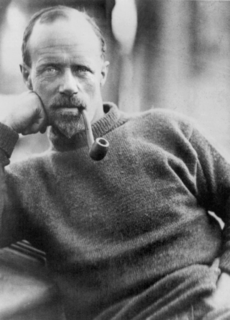
John Robert Francis Wild, known as Frank Wild, was an English sailor and explorer. He participated in five expeditions to Antarctica during the Heroic Age of Antarctic Exploration, for which he was awarded the Polar Medal with four bars, one of only two men to be so honoured, the other being Ernest Joyce.
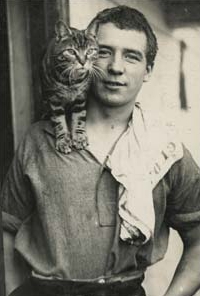
Mrs Chippy was a male ship's cat who accompanied Sir Ernest Shackleton's Imperial Trans-Antarctic Expedition of 1914–1917.
The Heroic Age of Antarctic Exploration was an era in the exploration of the continent of Antarctica which began at the end of the 19th century, and ended after the First World War; the Shackleton–Rowett Expedition of 1921–1922 is often cited by historians as the dividing line between the "Heroic" and "Mechanical" ages.
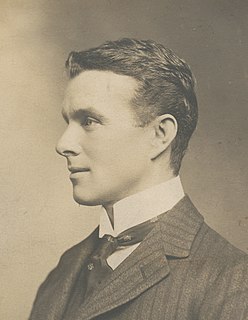
Aeneas Lionel Acton Mackintosh was a British Merchant Navy officer and Antarctic explorer, who commanded the Ross Sea party as part of Sir Ernest Shackleton's Imperial Trans-Antarctic Expedition, 1914–1917. The Ross Sea party's mission was to support Shackleton's proposed transcontinental march by laying supply depots along the latter stages of the march's intended route. In the face of persistent setbacks and practical difficulties, Mackintosh's party fulfilled its task, although he and two others died in the course of their duties.

Ernest Edward Mills Joyce AM was a Royal Naval seaman and explorer who participated in four Antarctic expeditions during the Heroic Age of Antarctic Exploration, in the early 20th century. He served under both Robert Falcon Scott and Ernest Shackleton. As a member of the Ross Sea party in Shackleton's Imperial Trans-Antarctic Expedition, Joyce earned an Albert Medal for his actions in bringing the stricken party to safety, after a traumatic journey on the Great Ice Barrier. He was awarded the Polar Medal with four bars, one of only two men to be so honoured, the other being his contemporary, Frank Wild.

The South Pole, also known as the Geographic South Pole, Terrestrial South Pole or 90th Parallel South, is one of the two points where Earth's axis of rotation intersects its surface. It is the southernmost point on Earth and lies on the opposite side of Earth from the North Pole at a distance of 12,430 miles in all directions.
John Grigsby Geiger is an American-born Canadian author. He is best known for his book The Third Man Factor: Surviving the Impossible, which popularized the concept of the "Third Man", an incorporeal being that aids people under extreme duress. The book is the basis for National Geographic Channel's Explorer: The Angel Effect, in which Geiger appears. A book of the same name was published in 2013.
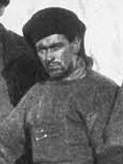
Alexander John Henry Kerr was an English marine engineer and wholesale newsagent. He is best known for his service in the Imperial Trans-Antarctic Expedition of 1914–1916, for which he was awarded the Silver Polar Medal.

All the White Spaces is an alternate history, horror and supernatural novel by English writer Ally Wilkes. It is her debut novel and was first published in the United Kingdom in January 2022 by Titan Books. It is about a trans man who joins an expedition to Antarctica in 1920, where he is tormented by supernatural apparitions.